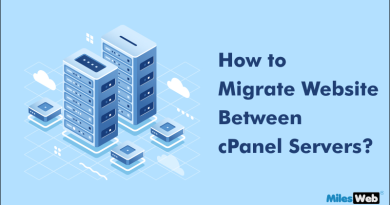Handling High Traffic Events on Your Online Shop
The volume of online shopping increases during specific special occasions such as festive sales, product launches, flash sales, and holiday sales. While this is great for business, it also presents a technical conundrum: managing the increase in traffic to your store’s website without compromising the best hosting for ecommerce, your website’s performance, and more.
Freezing during peak traffic events can be devastating for your brand’s reputation and may lead to the complete downfall of your sales. Not to worry, though. Steps can be taken, such as opting for cheap Postgres hosting, to ensure the reliability, speed, and security of an e-commerce site, even when under heavy traffic.
In this blog, we will discuss the best ways to manage heavy traffic for your online store.
1. Choose Scalable Hosting
Shared hosting can be advantageous for smaller businesses, but most of them do not provide the necessary resources to handle bursts of traffic. The ideal e-commerce hosting plan is the core of any website and therefore must be selected with careful consideration.
Think about
- VPS Hosting: Has dedicated resources that can be scaled as needed.
- Cloud Hosting: Provides scalability on demand by distributing traffic over several servers.
- Managed Hosting: Provides full service to customers, like those with WooCommerce or WordPress stores, offering automatic scaling and performance enhancement.
For example, MilesWeb provides tailored, scalable eCommerce hosting solutions for your e-stores. These enable maximum speed and responsiveness of the site at peak times.
2. Implement a Content Delivery Network (CDN).
A CDN is very useful in mitigating server strain by caching your content on global edge servers. When a customer visits your site, content is served from the closest server location, reducing latency and enhancing page load speeds.
Like Cloudflare, StackPath, or BunnyCDN, CDNs can easily be integrated into your store and improve site speed during peak traffic times.
3. Optimizing Website Performance
A website’s bloat can make it slow to respond when under pressure. Ensure that your site is lightweight and optimized:
- Using TinyPNG or various built-in plugins, compress images.
- Minify CSS, HTML, and JavaScript to improve load speeds.
- Limit third-party scripts and plugins that will result in delayed website loads.
- Enable lazy loading for videos and images.
- Frequently accessed pages and resources should be cached to reduce loading times.
- Google PageSpeed Insights and GTmetrix are suitable options to identify performance problem areas.
4. Prepare for the Spike in advance.
Prepare for an increase in load in advance by strategically planning for major campaigns.
- Run high-traffic simulations and load tests, and identify performance bottleneck areas during peak traffic.
- Monitor server metrics and assess how much available capacity there is.
- Notify your hosting provider of the upcoming server load. This will lead to them allocating additional resources or suggesting an upgrade.
- Refrain from making major updates or installing new plugins a few days before the event to prevent any unforeseen issues.
5. Enable Autoscaling (If Available)
Allotting additional or removing CPU or RAM during traffic spikes is referred to as “autoscaling.” It’s important to state that not all service providers implement this capability, but most cloud service providers do.
6. Improve Database Performance
Databases are usually a bottleneck in busy online stores. You can speed things up by
Improving and simplifying query fetching.
- Adding indexes to tables.
- Restricting the number of post revisions for CMSs like WordPress.
- Caching the database.
- If you use WooCommerce, plugins such as the Query Monitor can be used to improve your database performance by identifying slow queries.
7. Use a Queue System for Checkout
Sales exclusively tend to increase the number of users relying on services, which makes checkouts the most affected. Too many simultaneous transactions can time out or fail every ongoing process, leading to failed transactions.
Consider:
- Allowing users to check out in batches where these eCommerce queue systems check session times.
- Having load balancers that evenly distribute traffic to eliminate back-end server stress.
- Pre-order or reservation systems for invite-only launches.
- These methods help dramatically improve a user’s experience.
8. Monitor in Real-Time
- Tracking tools such as New Relic and UptimeRobot allow you to set health, performance, and uptime needs, which in turn provide feedback in real time.
- Keep your support staff on high alert during peak traffic windows to deal with technical or customer issues promptly.
9. Have A Backup Plan
- Back up your website (database and files) before the event occurs.
- Have redundancy like mirrored servers or failover systems to lower downtime in the event of failure.
- Proactively communicate to users if there are any issues with the system checks or checkout progress.
- A straightforward message such as “We’re experiencing high demand; please have patience” does wonders for maintaining customer trust.
10. Post-Event Analysis
- Once the spike in traffic has passed, go through a thorough review:
- Analyze the traffic and comprehend what worked out and what didn’t.
- Collect user feedback pertaining to the experience on the site.
- Analyze the sales and infrastructure performance metrics.
- Capture all lessons learned to strengthen future preparedness.
Conclusion
High-traffic events can be a potential jackpot for your online shop—if properly set up. With the appropriate scalable hosting, performance optimization, and proactively planned work, your store can remain fast, reliable, and user-friendly during sales surges.
Working hand in hand with a strong hosting provider, like MilesWeb, that understands the needs of your eCommerce business guarantees that your eCommerce site stays functional and profitable during the peak seasons.
Don’t wait until the last minute; prepare ahead of time so that with the next surge in traffic, you are fully capable of satisfying tens of thousands of customers and offering them a seamless browsing and shopping experience.




